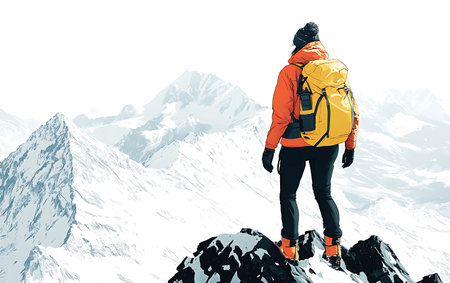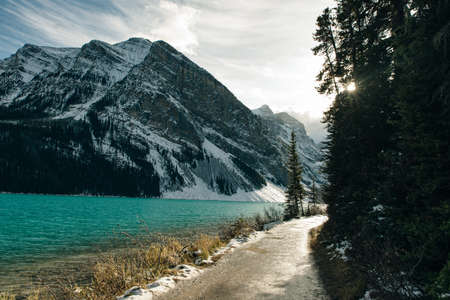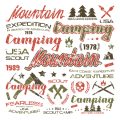Understanding Mud Season: What It Means for Trails
Mud season is a distinct period in the spring and fall when trails become especially vulnerable due to melting snow, frequent rain, and thawing ground. This transitional time is well-known across many parts of the United States—especially in regions with pronounced seasonal changes like New England, the Midwest, and the Pacific Northwest. During mud season, waterlogged soils lose their stability, making trails soft, slippery, and highly susceptible to damage from hikers, bikers, and even pets. The freeze-thaw cycles common in these seasons break down trail surfaces, creating muddy patches that can stretch for long distances. As a result, the impact on local ecosystems can be significant: trampling and widening of trails disrupt plant roots, compact soil, and lead to increased erosion. Understanding mud season isn’t just about avoiding dirty boots; it’s about recognizing how our outdoor activities affect fragile environments during their most sensitive periods. Practicing good trail etiquette during this time is crucial to preserving both the recreational value and ecological health of our favorite natural spaces.
Respect Trail Closures and Signage
One of the most important ways to minimize your impact during mud season is to respect trail closures and posted signage. In many regions across the United States, land managers close certain trails in the spring and fall to protect fragile soils and ecosystems while they are most vulnerable. These closures may seem inconvenient, but they play a crucial role in preserving the long-term health of our natural spaces.
Ignoring closed trails can cause irreversible damage. When hikers or bikers venture onto muddy paths, their footsteps or tires compact the soil, create ruts, and can even lead to erosion that washes away valuable topsoil. This not only degrades the trail but can also harm surrounding habitats, particularly in sensitive areas like wetlands or alpine meadows.
To help you understand why trail closures matter, here’s a quick comparison of common reasons trails are closed in U.S. parks and preserves:
| Reason for Closure | Example Location | Impact if Ignored |
|---|---|---|
| Muddy or saturated conditions | Rocky Mountain National Park, Colorado | Soil compaction, trail widening, vegetation loss |
| Wildlife protection (nesting or migration) | Yellowstone National Park, Wyoming | Disturbance to wildlife, reduced breeding success |
| Restoration work underway | Appalachian Trail sections, various states | Damage to young plants, undermines restoration efforts |
If you encounter a sign indicating a trail closure or reroute—whether it’s a simple “Trail Closed” notice or a more detailed explanation—it’s essential to follow those directions. Many U.S. parks use clear language and symbols so visitors can easily understand what’s expected. For example, a red “X” often means no entry, while yellow caution signs may indicate seasonal concerns like mud or flooding.
Remember: these rules aren’t just bureaucratic red tape—they’re science-backed strategies designed to keep both people and nature safe. By respecting trail closures and signage, you’re helping maintain access for everyone in future seasons and ensuring that America’s beautiful landscapes stay healthy for generations to come.

3. Stick to the Center of the Trail
When hiking during mud season, it might be tempting to avoid muddy patches by stepping off to the sides of the trail. However, sticking to the center—even if it means getting your boots a little dirty—is one of the most important things you can do to protect local trails and their surrounding ecosystems. Walking around mud widens the trail, tramples fragile plants, and causes long-term damage to native habitats. In many American parks and wilderness areas, widened trails mean more erosion and a greater need for future repairs, which can strain already limited conservation resources. By embracing a little mud and treading right down the middle, you help maintain the original trail design and ensure that other hikers can enjoy a sustainable path for years to come. Remember: muddy boots are temporary, but trail damage can last for generations.
4. Gear Up for Muddy Conditions
When it comes to spring and fall hiking in the U.S., being prepared for mud season is essential—not just for your comfort, but also to minimize your impact on sensitive trails. The right gear can help you stay safe, keep you dry, and reduce trail erosion caused by improper footwear. Here’s how to choose the best equipment for muddy adventures:
Choose the Right Footwear
Your choice of boots matters most during mud season. Look for waterproof hiking boots with aggressive tread patterns to provide traction and prevent slipping. High-cut boots are ideal as they offer extra ankle support and keep out mud and water. Below is a table featuring popular American brands known for their quality:
| Brand | Recommended Model | Key Features |
|---|---|---|
| Merrell | Moab 3 Waterproof | Durable, waterproof membrane, excellent grip |
| Keen | Targhee III Waterproof Mid | Roomy toe box, sturdy sole, moisture-wicking lining |
| Columbia | Newton Ridge Plus II Waterproof | Lightweight, slip-resistant sole, affordable price point |
| The North Face | Ultra Fastpack IV Mid Futurelight | Breathable waterproofing, Vibram outsole, lightweight design |
| Danner | Mountain 600 Waterproof | Classic style, high-traction Vibram sole, waterproof suede/leather upper |
Packing Essentials for Mud Season Hikes
- Gaiters: These protect your lower legs from mud and debris. Outdoor Research and REI Co-op offer durable options.
- Trekking Poles: Adjustable poles from Black Diamond or Leki help maintain balance on slippery terrain.
- Mud-Specific Traction Devices: Yaktrax and Kahtoola make over-the-boot traction aids that add grip when things get slick.
- Packed Bag: Bring extra socks (preferably wool) and a plastic bag for muddy shoes at the end of your hike.
- Quick-Dry Clothing: Choose synthetic or merino layers that wick away moisture; Patagonia and Smartwool are trusted brands.
Pro Tips for Staying Comfortable and Low-Impact
- Always clean your boots before and after hiking to prevent spreading invasive species.
- If your trail gets too muddy or you’re sinking deep into soft ground, consider turning back to avoid causing damage.
- Avoid cotton socks—they absorb water quickly and can lead to blisters.
- If you hike with pets, use dog booties or wash paws post-hike to minimize trail impact.
- Select neutral-colored gear to blend in with natural surroundings—this is common etiquette in many U.S. parks.
By gearing up properly with reliable American-made products and following these tips, you’ll be better equipped to handle the challenges of mud season while respecting the trails for all who come after you.
5. Leave No Trace: Pack Out What You Pack In
Mud season is a critical time to reinforce the Leave No Trace principles, especially as trails are more vulnerable to damage and disruption. During spring and fall, when trails are wet and soft, every step leaves a mark, so minimizing your environmental impact becomes even more important. One of the most straightforward ways to do this is by ensuring that everything you bring with you onto the trail goes home with you. That includes food wrappers, water bottles, dog waste bags, and any other trash or belongings—if you pack it in, be sure to pack it out.
Why It Matters During Mud Season
When soil is saturated and plants are just beginning to regrow, litter and waste have an outsized effect on the ecosystem. Decomposing trash can leach harmful substances into fragile environments, while food scraps—even if biodegradable—can attract wildlife and disrupt natural foraging behaviors. Packing out all waste helps protect both the trail and its inhabitants during this sensitive season.
Practical Tips for Responsible Hiking
Bring along a small trash bag or resealable container specifically for your garbage. If youre hiking with pets, carry extra bags for pet waste and dispose of them properly when you leave the area. Consider reducing single-use packaging by packing snacks in reusable containers to minimize potential litter. And remember: even things like fruit peels or nut shells dont belong on the trail—they take longer to break down than you might think and arent part of the local ecosystem.
Leave Only Footprints
The best way to show respect for nature during mud season is by leaving no trace of your visit. Every hikers commitment to packing out all items helps ensure that trails remain beautiful, healthy, and accessible for everyone. By modeling good stewardship, we set an example for others and help preserve our favorite outdoor spaces for years to come.
6. Be Considerate of Other Trail Users
During mud season, being mindful of fellow trail enthusiasts is just as important as protecting the trails themselves. Respectful interaction and clear communication can go a long way toward ensuring everyone enjoys their outdoor experience, no matter the weather conditions or trail challenges.
Know the Right-of-Way Rules
On multi-use trails, it’s essential to understand and practice proper right-of-way etiquette. In the United States, hikers yield to equestrians, and bikers yield to both hikers and horses. If you’re coming up behind someone or meeting another user head-on, slow down, announce your presence with a friendly “hello,” and step aside when appropriate—especially if you’re on muddy or narrow sections where passing could cause more damage.
Communicate Clearly
Muddy trails can be slippery and unpredictable, making communication even more critical. Let others know your intentions with polite verbal cues like “passing on your left” or “three hikers coming through.” If you’re biking, give advance notice and reduce speed when approaching others. Equestrians appreciate calm voices and space; ask the rider how best to pass their horse safely.
Share the Trail Responsibly
Be patient during busy times or at tricky spots. Step off to the side—avoiding fragile muddy edges—to let others pass. If you need to stop for a break, move off the main path so you don’t block traffic. Remember that mud season means everyone is navigating extra obstacles; a little courtesy goes a long way in keeping spirits high and trails intact for all users.
7. Support Trail Maintenance Efforts
One of the most impactful ways you can help protect trails during mud season is by supporting local trail maintenance efforts. Spring and fall are especially tough on hiking paths, as wet conditions lead to erosion and damage that require extra attention from dedicated volunteers and organizations. Getting involved not only helps preserve these natural spaces but also fosters a sense of stewardship within the outdoor community.
Volunteer Your Time
Many American trail organizations, such as the Appalachian Trail Conservancy, Pacific Crest Trail Association, and local land trusts, rely heavily on volunteers for maintenance projects. These opportunities often include clearing debris, repairing muddy sections, building boardwalks, or installing water bars to improve drainage. Volunteering is a great way to learn new skills, meet fellow outdoor enthusiasts, and give back to the places you love to explore.
Donate to Trail Organizations
If you’re short on time but still want to make a difference, consider donating to reputable trail advocacy groups. Your contributions help fund critical maintenance work, educational programs, and conservation initiatives that keep trails safe and sustainable year-round. Many organizations offer membership perks, like newsletters or early access to events, so you stay connected with trail happenings in your area.
Participate in Community Events
Look out for local trail days, clean-up events, or fundraising hikes organized by outdoor clubs or park services. These gatherings not only support physical trail improvements but also raise awareness about responsible recreation during mud season. Engaging with your community at these events amplifies your positive impact and helps spread the word about best practices for minimizing trail damage.
Advocate for Trails
Lastly, use your voice to advocate for increased funding and public support for trail systems. Contact your local representatives or share your experiences on social media to highlight the importance of well-maintained trails. By championing these causes, you help ensure future generations can enjoy America’s diverse landscapes responsibly—no matter the season.


